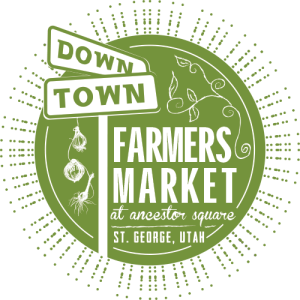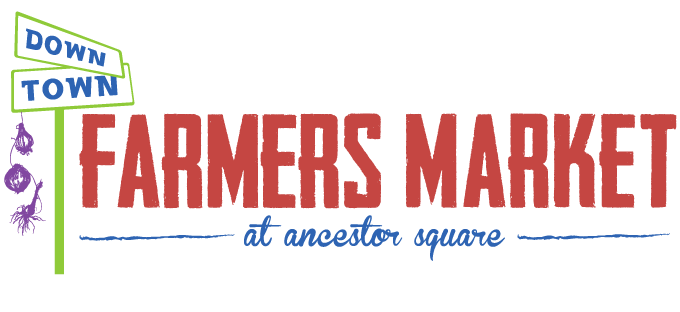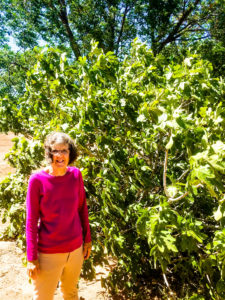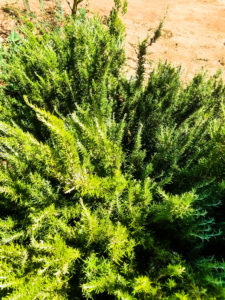Pearce Family Farms
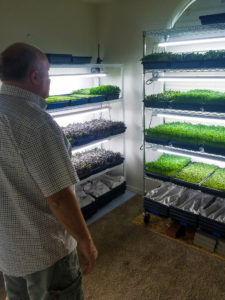
Darren Pearce
There is a lot of behind the scenes work that goes into putting on the Farmers’ Market each year. We start cracking away at it in February; sending out emails, marketing, securing permits, and following up with and finding new vendors. From that moment on, all day every day, the phone rings off the hook with people pitching their ideas and products. We read, reread, and re-reread applications to make sure we have a diverse assortment of vendors with new and exciting products. Then we follow up, confirm and begin to set our line-up. That’s how we start the Farmers’ Market. Last March, it seemed every other day I had someone call and sign up to sell micro-greens. I’d write down their names but when I’d go to finalize their commitment they’d disappear off the face of the earth. So, by the time Darren Pearce from Pearce Family Farms called and said he was interested in coming on for the whole season with micro-greens, I was reminded of the poetry of Great White and felt once bitten twice shy. It took less than 10 minutes for me to realize that Darren was the real deal, a concept cemented after seeing his booth at the Farmers’ Market. From the educational handouts, the numerous varieties of micro-greens, to the packaging, it’s clear that Pearce Family Farms is here to stay. Which is one of the main reasons I was so excited to have the opportunity to check out their operation this week.
I pulled up to Darren and Katie Pearce’s beautiful home, rang the doorbell, and was greeted by Darren and a wave of activity. Little kids were running around, Katie had just finished canning peaches, and giggling could be heard everywhere. It seemed like the perfect place to sit down and talk about seriously good food. We planted ourselves in the living room and began at the beginning. Darren started telling me about growing up in a family of avid gardeners. Both grandpas had huge gardens, “My one grandpa was more experimental. He would let things grow wherever, but my Grandpa Pearce… He was methodical.” Darren talked about helping Grandpa Pearce every season and learning great lessons about keeping a perfect garden. That’s when a deep love for growing food started. “I’ve always told Katie that if I could find a way to grow food and make a living at it that I would. So, last year I really started looking into it and here we are.” I asked him how he made the decision to grow micro-greens. Darren replied, “Due diligence.” It started by following homesteaders on YouTube and Instagram, then he fell down a gardening rabbit hole. Darren walked me through his research process of calling restaurants, estimating cost and profit ratios, and analyzing multiple spreadsheets before he committed. I sat there thinking, Grandpa Pearce would be proud.

Left to right: Lovely Radish seedlings, Darren and some of the shelves, and baby Basil.
At this point in the conversation, I revealed how little I knew about micro-greens by asking Darren what the difference was between sprouts and micro-greens. He patiently explained to me that sprouting is done in a cool dark place and is basically the root of the plant. Micro-greens are grown in a soil substrate and is the actual seedling. This distinction is why micro-greens are so healthy for you, they contain all the nutrients from the seed. Darren went on to tell me that he had been eating a micro-green salad every day for a month and the difference in his energy levels and overall health has been dramatic. “The micro-green can be up to 40 times more nutrients than the grown version of the plant.” Darren again started explaining the basic growing process. He then quickly popped out of his seat saying it would be easier to just show me, and I followed him to the grow room. As soon as I stepped over the threshold into the room, I was hit with the overwhelming scent of fresh air as two walls full of green beauties grew silently before me. “WOW! This is awesome.” Katie peeked her head in smiling. “Do you love this?” I asked her, pointing to the plants. She smiled, “Yes I do. I’ll often come stand in here and ask him questions about stuff because I’m just in awe of what he’s doing.” I nodded in agreement. Awe is exactly what I felt.
Darren quickly began talking me through his growing schedule. He mixes the growing substrate himself out of coco core and perlite, then each tray is sprinkled with seeds that are so tiny that you can’t believe they grow into anything. Darren then waters them and stacks them to weight the seeds. This simulates the pressure of being buried in dirt. “During this time, I watch them really close because it’s so easy for them to dry out. Once they hit a certain point, I unstack them and then they just grow like normal seedlings.” The trays will sit under the energy conserving LED lights Darren has rigged to every shelf. He described the different lengths of grow cycles and how the main crops are ready in about a week. I asked him if he had any kind of pests or mold issues. Darren shook his head, “Because they grow for such a short period they never have time to develop any bug problems. Everything I do is organic, and I’ve never had mold.” He also explained that after one use, the soil gets composted for use in their home garden. Having fresh soil, each cycle ensures optimal nutrition and eliminates the possibility of contamination. Darren then started pointing out the different stages between the crops. He plants two cycles a week: one for his restaurant orders and one for the farmers’ market.

seedlings stretching towards the light and tiny seeds.
Darren started praising each micro-green and their appeal to the chefs: Arugula added a nice spice, Radish was a beautiful pop of purple, the Wellness Mix made a well-rounded salad. I couldn’t help but agree mesmerized by the undulating sea of purple at eye level. I made a mental note to buy Radish this Saturday. As we gently poked some sunflower seed shells off the top of the seedlings, I asked what the next step for Pearce Family Farms was. Darren replied that they were already planning to move the grow room to a bigger space sometime in the next month. Then he started explaining how he wanted to incorporate a home delivery option through nutritionists and health conscious programs. He also talked about expanding his specialty crops for chefs, such as micro Basil and harder to source items. I stood there looking around, feeling a little overwhelmed by the logistics of the operation: the planting schedule, frequent watering, hand trimming the harvest, packaging, and delivering. It would be so easy to miss one step and have it all come to a screeching halt, but then I remembered that being methodical and precise is in Darren’s blood and he’s got everything dialed in perfectly.
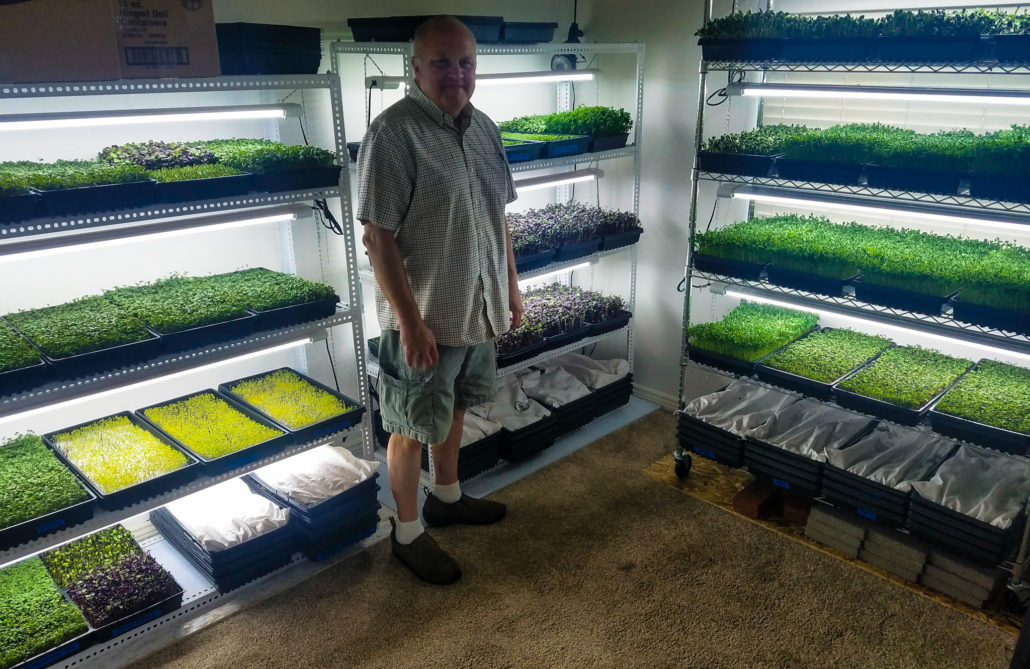
Darren Pearce and the micro-greens
Feeling my end-of-the-interview-smile coming on, I thanked Darren and Katie for letting me invade their space for the morning and hurried out the door. Each step I took on my way to my car was accented with a, “Wow.” I know, I know, I work for the Farmers’ Market, I shouldn’t be surprised by people growing things anymore, but there is something so raw and connecting when you watch someone make their passion their life. It’s inspiring when you see someone living in alignment with what they truly want to do. Pearce Family Farms is out there making it happen every day and we are beyond excited to have them as a cornerstone vendor of the market. Pearce Family Farms will be at the Downtown Farmers’ Market every Saturday 9 am- 12. You can follow them on Facebook here or touch base for orders at darren@pearcefamilyfarms.com.
